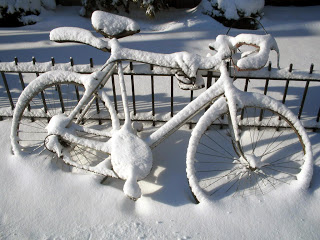Let’s talk about how to fix a flat bike tire.
Repairing a bicycle tire on the road may seem like a daunting task, but it is actually quite simple. Experienced bicyclists know that being prepared can mean the difference between being delayed or being completely stranded.Before hitting the road, a smart bicyclist makes sure to pack an emergency repair kit.
This kit should have a small pump or quick-fill CO2 cartridge, wrenches, bike tire levers, and a complete tube repair set or a couple of spare tubes. Follow these instructions for a quick and hassle-free tire repair.
Remove the Tire from the Bike
If your bike has a quick-release clamp, you can simply unlatch it and remove the tire. If it has nuts, you must use wrenches to turn these nuts counter-clockwise. Most bicycles have safety clips under these nuts, and you must ensure that the clips are released before removing the tire.
Dismount a Tire Bead from the Rim
Bicycle shops carry tire dismounting levers for bicycles that make the task easier. Work a lever’s straight end into one side of the wheel between the rim and the tire bead. Flip the lever and attach the hooked end onto a spoke to prevent the tire from popping back into the rim. Insert the straight end of the second lever between the tire bead and rim, and carefully work the lever around the wheel until the bead is free of the rim.
Remove the Tube for Inspection
Carefully pull the tube out of the tire and the fill valve from the rim. Using a tire pump, fill the tube until it is slightly firm. This should make a leak easy to identify. Tube damage caused by a pinch should have two holes close together, and puncture damage is usually a single hole. Carefully inspect the tire’s interior for the cause of the leak and remove any embedded objects.
Repair or Replace the Tube
It is advisable to pack a couple of replacement tubes so a field repair is unnecessary. If you do not have new tubes, you must repair the original tube. Clean the damaged area with emery cloth or roughing tool and an alcohol-based cleaner from the patch kit. If your kit has glue-free patches, simply press a patch firmly over the damaged area. If your patch requires glue, apply the glue onto the damaged area and allow it to dry. Remove the protective film from the patch and firmly press it onto the glue area, making sure not to touch the glue or the patch’s adhesive surface.
Replace the Tube and Remount the Tire
Fill the tube until it holds its shape. Carefully insert the fill valve into the rim and push the tube into the tire. Work the tire’s bead back around the rim by rolling it over with your hands while pushing away from yourself. Avoid using levers to remount the tire as they may damage the tube. When the tire is remounted, work the tube into the tire by tucking the tire bead low onto the rim at the valve area and pushing upward on the valve stem.
Fill and Reinstall the Tire
Partially fill the tire. Make sure the valve stem is straight and that the tire beads are correctly seated. Completely fill the tire and reinstall the wheel onto the bicycle. Ensure the clamp or nuts are tightly secured and test-ride the bicycle.If the bicycle rides normally, continue on your journey confident with the knowledge that if another flat occurs, you have the tools and experience to quickly address the problem.



